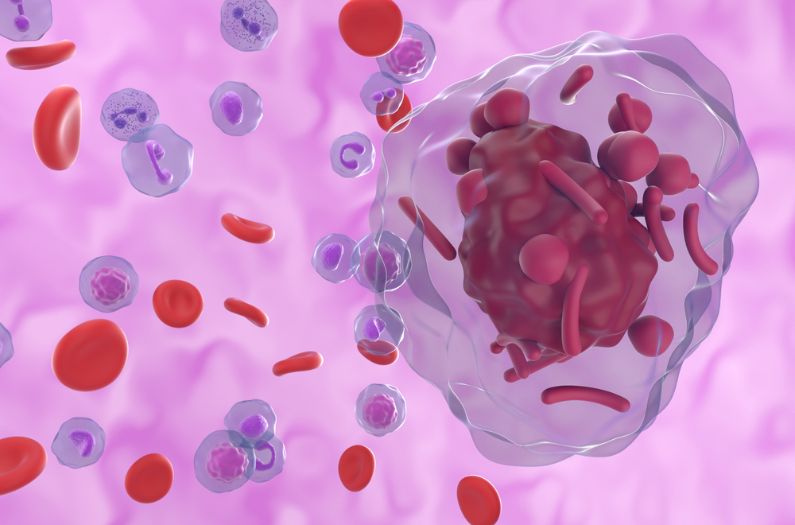Leukaemia occurs when your bone marrow makes too many immature white blood cells (blast cells) which don’t mature properly and can’t fight infection as they should. Over time, these abnormal cells crowd out the healthy red blood cells that carry oxygen and the platelets that help your body clot. As a result, your organs won’t get the oxygen they need and you may have more infections.
No one knows exactly what causes leukaemia. But the disease often happens because of certain changes (mutations) in the DNA of the cells. These mutations make the cells grow and develop differently, causing them to become cancerous.
Normally, your bone marrow produces billions of new blood cells every day. The majority of these are red blood cells, which carry oxygen to your tissues and organs. The rest are different types of white blood cells that help fight infection and blood platelets, which clot your blood when it breaks open. In leukaemia, the bone marrow produces too many immature white blood cells that can’t carry out their normal functions and crowd out the healthy red and other blood cells.
There are several different types of leukemia, which healthcare providers classify based on how quickly the disease worsens and whether it affects myeloid or lymphoid cells. These are also classified as acute or chronic. Acute leukemias are very serious and must be treated as soon as possible to prevent them from progressing to a more severe form.

Acute leukemias are generally more difficult to treat than chronic ones. The aim of treatment is to achieve a state of remission, in which there are no leukemia cells in the blood or bone marrow. But even when remission is achieved, the cancer can come back and you will need ongoing treatment to control the leukemia.
Some slow-growing leukemias don’t cause any symptoms and you won’t need treatment straight away. This is called watchful waiting and your doctor will check you regularly for any signs that the leukaemia is getting worse.
Treatments for leukemia include chemotherapy, radiation therapy and stem cell transplantation. They also include immunotherapy, which involves injecting your own immune system with specially engineered cells to help it hunt down and kill cancerous cells.
Palliative care aims to help you with your quality of life and can be given at the same time as other treatments, such as chemotherapy. It may help with your pain, nausea and other symptoms. It can be given in a hospital, clinic or at home. There are many things you can do to reduce your risk of developing leukaemia, including eating well, exercising regularly, not smoking and avoiding excessive exposure to sunlight. There is no way to prevent leukaemia, but you can lower your risk by preventing other diseases such as heart disease and diabetes.









